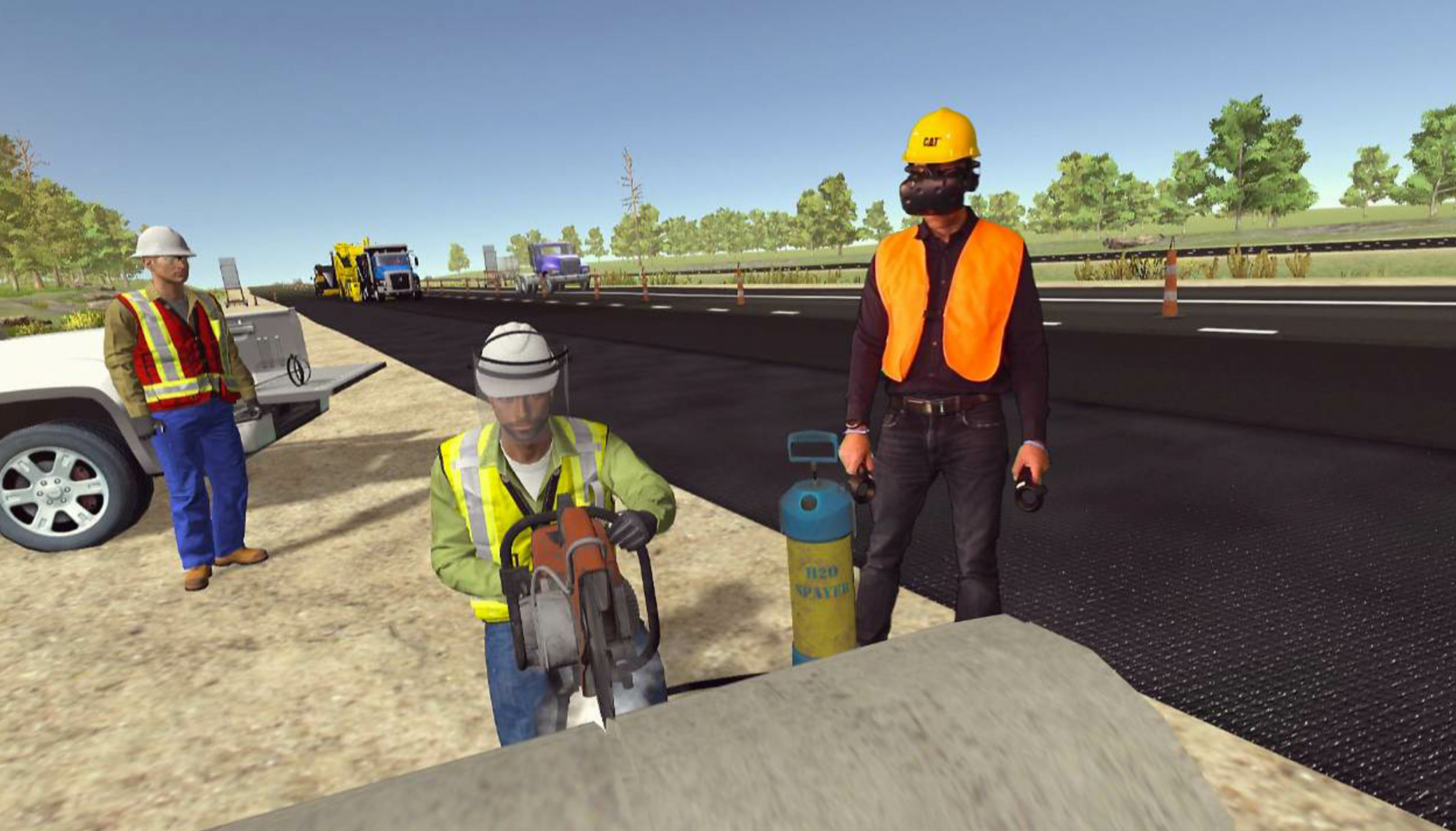Caterpillar Launches Virtual Reality Safety Training
BY AsphaltPro Staff

Caterpillar has launched a virtual reality safety training tool to help road construction crews stay safe on the job.
Around 90 percent of work-related safety incidents are caused by unsafe behavior rather than unsafe conditions. That’s why it’s so important to teach crew members how to work safely on the job site.
Safety training of this nature typically comes in one of two forms. Either the training is done in a classroom setting where the information may be difficult to visualize and retain, or it’s done on the job where the situation is often uncontrollable.
That’s why Caterpillar, Inc., Peoria, Ill., developed its virtual reality safety training program. Virtual reality, or VR, immerses the user inside a simulated environment with which they can interact.
“If you’ve never been on a paving train before, this will immerse you in the sights and sounds of what it’s like to be out there on day one of a job,” said Justin Ganschow, Caterpillar Safety Services’ business development manager.
“Immersion is the big differentiator between this and traditional safety training where you’re reading a stack of policies and procedures sitting in a job site trailer or the HR department,” Ganschow said. “That just doesn’t translate as easily into retained knowledge.”
According to research done by Dr. Narenda Kini, learners retain as much as 80 percent of information learned through a VR experience, compared to retaining only 20 percent of what they learn through traditional training after only one week.
“Seasonal work, like paving, tends to have a lot of turnover,” Ganschow said, “so you have a lot of inexperienced employees as well as employees that have been off for several months that you’ll need to get back into the safety routine.”
The virtual safety training was the brainchild of a Caterpillar customer, Colas North America. In keeping with Colas’ original vision, the first VR safety training module Cat released focuses on paving safety.
The virtual experience includes five different scenarios Colas employees identified as common safety concerns on the paving train. I had the opportunity to test out this virtual training module when it was debuted at World of Asphalt in Indianapolis in February.
The training module begins with a virtual flyover of a four-lane highway project. Then, I was taught by voice command how to use the controls to navigate and interact with the virtual world before jumping into the first training scene.
The first scenario is a pre-shift meeting during which time I put on my personal protective equipment and identified safety hazards related to coworkers’ PPE. Although it took me a few tries to learn how to effectively interact with the virtual hard hats, vests and safety goggles, within a few minutes I’d picked up the basics and was ready for the second scenario, where I’d inspect traffic control devices with the foreman.
This scenario is perhaps the most immersive of the experience. Having been on paving trains in-person, I found that this experience replicates what it is like to work alongside the often unpredictable traveling public quite accurately. In fact, I found it more nerve-wracking in the headset than I have in-person, due to the more limited field of view of the headset (90 degrees compared to around 120 degrees for most people).
The other scenarios include performing groundwork near the paver while trucks are backing up and dumping mix, using a concrete saw alongside another crew member, and a safety review of the day with the superintendent.
“It’s a safe place to fail,” Ganschow said. “You can’t take an employee out on the job and allow them to walk between a truck and a material transfer vehicle or you’ll have very bad consequences. With the VR training, we can do that and talk to them about why that action wasn’t safe.”
Even though I’ve written about safety in these pages plenty of times, I still “died” twice during the virtual experience: once by truck back-over and another time by a saw blade to the face. Although I can place some blame on the distractions of the trade show floor and the learning curve required to master the headset and controllers, it was a learning experience nevertheless.
Ganschow said the VR training may also be a useful asset to find new employees. “You could take this to a job fair and have people try it out,” he said. “If they aren’t comfortable in this virtual environment, they probably won’t be comfortable out on the highway.” After working through the experience myself, I can safely say I am where I belong (writing these pages for you!).
Cat intends to expand its offerings to other industries, including quarry and aggregates, mining, manufacturing and utilities, to name a few, through partnerships with its customers in those industries. Each additional module would be available as a paid download to customers who already have the VR kit through an online portal.
The Cat VR Safety Training kit costs $14,950 and includes a gaming laptop to run the modules, an HTC Vive VR headset, audio strap and wireless controllers, a Fovitec mount stand kit and a Pelican transportation case.
